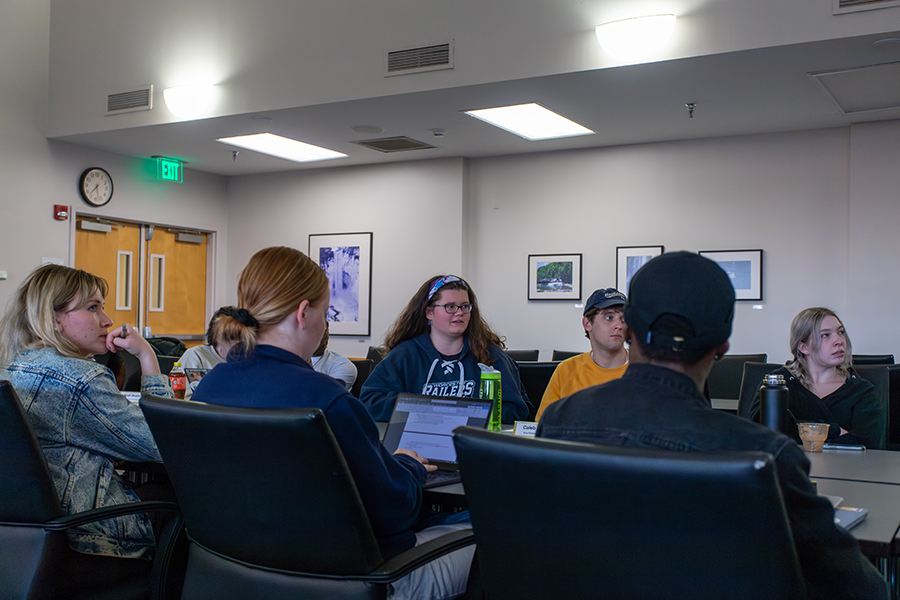They’re smaller than a grain of sand, deadly to their hosts and infiltrating Ithaca’s forests. Woolly adelgids, aphid-like insects, have invaded Ithaca’s hemlock trees, posing a threat to the area’s ecosystems.
Woolly adelgids have so far been found in 21 sites in the Finger Lakes region and the southern Appalachian Mountains with a nearly 100 percent mortality rate. Though only spotted in Ithaca’s forests last summer, woolly adelgids were introduced into the United States from Japan in the early 1950s.
Mark Whitmore, a entomologist in natural resources at Cornell University, said the adelgids have spread rapidly since the 1980s. While the adelgids have not killed any hemlock trees in the area this year, many are worried they may.
“The adelgids are sensitive to cold, so they move slower and take longer to kill the trees up here,” Whitmore said. “The question is whether they will kill them, and based on experience in the South, you betcha they will.”
The insects only target hemlock trees, which has an impact on the wider forest ecosystem.
According to Whitmore, hemlocks are a “keystone species” that are important to the area ecologically and recreationally.
“It’s one of the few conifers in the region,” he said. “They regulate stream temperatures, which is important for native brook trout. They’re also important in providing shade for wildlife in summer and cover in winter to migrating birds.”
Todd Bittner, director of Cornell’s natural areas, said hemlock trees are also important for flora as well as animal life.
“The dense shade and cooler temperatures they provide makes a great habitat for several species of rare plants,” he said. “They also hold the soil in place and prevent erosion, which can impair water quality. They make part of the signature landscape enjoyed by outdoor enthusiasts, they make our gorges gorgeous.”
Joe Buttafuoco, crew leader for Cornell’s natural areas, said the adelgids also posed safety concerns for people.
“Areas where they have been found like Fall Creek and Cascadilla Gorge have trails, so infected hemlocks could fall over and pose a threat to hikers,” Buttafuoco said.
The adelgids have appeared at sites at Seneca and Cayuga lakes, and were spotted at Cascadilla Gorge by Cornell staff in February. Bittner said the sites might have been infected for a long time before anyone noticed.
“The adelgids generally take four to 10 years before they kill the tree,” Bittner said. “Just because they found it in February doesn’t mean that’s how long they’ve been here. Infestation takes time and has a longer term impact.”
Woolly adelgids are difficult to spot until they reach adulthood and emit secretions that give them their white, woolly appearance. They are commonly found at the base of hemlocks and are spread by birds, wind and through nursery stock. According to Bittner, the best time to search for the insect is between fall and early spring.
“The adults are actively feeding in winter, they’re presently laying eggs and then the nymphs will start crawling around and will be able to be dispersed into the wild,” Bittner said.
The adelgids can be effectively treated on a tree-by-tree basis with horticultural oils and pesticides. It is much more difficult to treat trees on a wide basis.
“We have been investigating using a bio-control beetle, along with a fungi, which are native to the U.S.,” Bittner said. “But the first step in our strategy should be preventing these species reaching our shores in the first place.”
Buttafuoco has been coordinating volunteer survey groups to search for the adelgids.
“We’ve held about four to five surveys every week for the past month,” Buttafuoco said. “We … [are] all interested in protecting the hemlocks, and our natural areas in general.”
Though eradicating the insects will take time and commitment, Whitmore believes it is worthwhile.
“If you were to go up to the gorges now, ask yourself, what would this place be like without all of these trees?” he said.
Cornell Plantations is coordinating volunteer monitoring surveys in the Ithaca region to identify new hemlock woolly adelgid infestation sites. For more information, visit www.plantations.cornell.edu.







